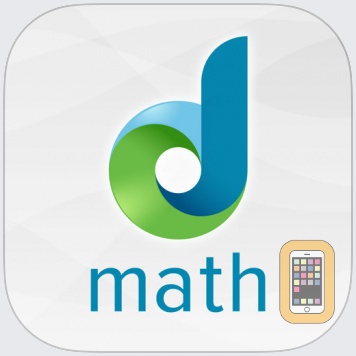

The Harvard study took two years, and many small companies can’t afford to wait that long for results.īut for DreamBox, the $130 million boost will give it the resources to pursue research alongside product development, sales and global expansion. And you’ll see that we never present DreamBox as a substitute for teachers.”Ĭonducting rigorous efficacy evaluations takes time and resources, and many startups too frequently put these efforts on hold. If the results aren’t good, well, we’ll make the product better. “You’re going to see more studies from us.
#Dreambox learning math program software#
That would imply that students could use DreamBox alone and expect to see gains, she says, but “our software wasn’t designed to be used independent of a teacher.” She is not hesitant to publish humbling findings. Woolley-Wilson isn’t concerned that the study did not find a causal link between the product and learning outcomes. The Harvard study chronicled achievement gains for students who used the program for the recommended length of time, but still noted that the evidence for “causal impact of DreamBox on student achievement is encouraging but mixed.” Since 2010, DreamBox has worked with third-party researchers from research groups including Harvard and Johns Hopkins University to conduct and publish efficacy studies. “One of the things that attracted Rise was our willingness to subject ourselves to scrutiny by third-party evaluators.” Most companies in this space “make big claims about revolutionizing learning, but we have not subjected ourselves to the scrutiny of independent researchers,” she says. But we believe that driving impact in learning outcomes will get us there.”Ī lack of efficacy research-essentially, proof that edtech “works”-is one of Woolley-Wilson’s biggest pet peeves when it comes to the education industry. “Don’t get me wrong,” Rogers tells EdSurge in an interview. Instead of the usual private-equity conversations around profits and margins, Rogers wanted to talk about DreamBox’s research and learning outcomes. So he reached out to Woolley-Wilson at the start of 2018, and they met in February. Rogers says DreamBox stood out as one of the few in that latter category that offered demonstrable evidence of improving student outcomes. educational providers and digital curricula. (There are also smaller regional sales teams scattered across the country.) As the company grew, it caught the attention of John Rogers, who first met Woolley-Wilson in 2012 at an education industry conference, and now leads the education investment team at the Rise Fund.Īfter the Rise Fund launched in April 2017-with a $2 billion coffer-Rogers’ team created a market map to explore education investment opportunities in three categories: career training services, non-U.S. Today, DreamBox has grown to 165 full-time employees across its offices in Bellevue, Wash. It also might have shut down were it not for a $10 million investment in 2010 from Netflix CEO Reed Hastings. A dozen years ago, it was one of the first companies to claim its program was “adaptive,” meaning that it could tailor each student’s experience based on his or her needs. It’ll also help ensure that the company won’t be in dire financial straits again.įounded in 2006, DreamBox has steadily built out a suite of online math programs for elementary and middle-school students. In fact, she claims the company was turning a profit before she entertained the Rise Fund’s investment opportunity.īut the check does go a long way towards ensuring that the company can accelerate its growth and development. “DreamBox was not looking for funding when this happened,” she firmly states in an interview with EdSurge. The short answer: It doesn’t, says Woolley-Wilson. It’s a figure that also begs the question: Why does DreamBox need that much money? It’s also a big bump from the $40 million in total venture capital that the company had raised since 2010, when Woolley-Wilson took the helm. This deal marks the biggest single investment in a U.S.-based education technology company in 2018. (Duncan currently serves as an education advisor to The Rise Fund.) The investment will make the Rise Fund the majority owner of DreamBox. Education Secretary, who will join DreamBox’s board of directors.

Along with the check comes Arne Duncan, the former U.S. Now the company is getting even more spoiled, in the form of a $130 million investment from The Rise Fund. Those “patient investors,” she says, helped keep the company running when its digital math product was still looking for its footing in the education market. “I’ve been spoiled by the likes of Reed Hastings and John Doerr,” acknowledges Jessie Woolley-Wilson, CEO of DreamBox Learning.


 0 kommentar(er)
0 kommentar(er)
